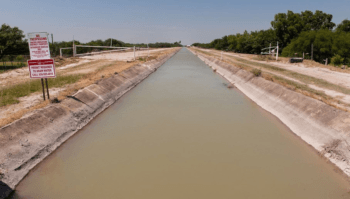Agricultural Compounds Linked To Birth Defects

One of the most unappreciated luxuries of modern life may be the fact that clean water comes out of the taps on demand, but as the recent lead crisis in Flint, Michigan, reminds us, we shouldn’t take that for granted. However, water need not look or smell wrong to be dangerous, especially to the most vulnerable: embryos in their first few weeks of development.
That’s why Jean D. Brender, R.N., Ph.D., professor emeritus at the Texas A&M Health Science Center School of Public Health, has spent years studying the effects chemicals in water can have on developing fetuses. Based on her work and extensive review of the published literature, she’s found that three contaminants (nitrates, atrazine and arsenic) in drinking water have been associated with birth defects.
“We know what’s in our public water supply, but many people are on private wells for their drinking water, and those wells aren’t routinely tested,” Brender said. Her work and other studies have shown that women who drink primarily from these private sources, especially in rural areas, may be most at risk.
Brender’s previous work, funded in part by the National Institutes of Health (NIH) and published in Environmental Health Perspectives, found that women who had babies with birth defects—such as limb deficiencies, cleft palate and cleft lip—were almost two times more likely than other new mothers (those having babies without major birth defects) to have ingested water with large amounts of nitrate, a component in many common synthetic fertilizers, during their pregnancies. Now, she has looked at various studies of other compounds and found that atrazine and arsenic may also be linked to birth defects. The findings of her and co-author Peter Weyer, Ph.D., of the University of Iowa, were recently published in Current Environmental Health Reports.
Atrazine is commonly used to grow corn, and it can then leech into the soil and then into drinking water sources. Arsenic is also a problem in drinking water in Texas, even in municipal systems, but that may be due to naturally occurring sources in the bedrock, rather than agricultural use. Still, it may cause problems, especially because the current “safe” levels of arsenic have been computed for cancer risk, not reproductive harms.
Continue reading on Vital Record.
This article by Christina Sumners originally appeared in Vital Record.





